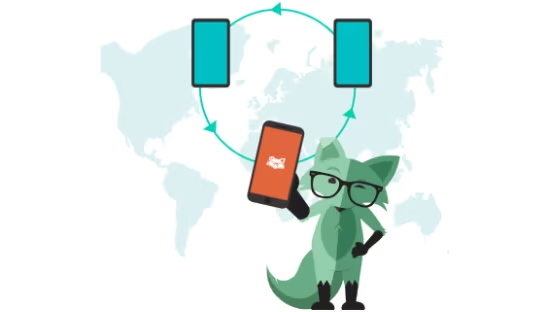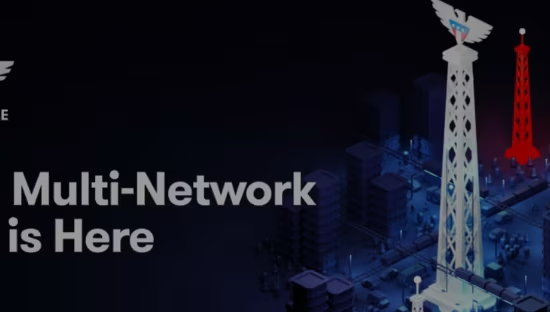
Globe Roaming Bundle: Data + Travel Insurance in One Smart, Affordable Package
Travel today is a paradox. We’re more connected than ever, yet when you step off a plane in a new country, your first thoughts still include, “Do I have data?” and “What if something goes wrong?”
For most travellers, those two needs—connectivity and security—have always been separate checkboxes. You buy a roaming plan or eSIM for internet, and you buy travel insurance for peace of mind. Different providers, different logins, different headaches.
But Globe Telecom’s latest move bridges that gap. With its new roaming bundle that includes travel insurance, Globe is rewriting what it means to be a connected traveller. And in an increasingly competitive roaming and eSIM landscape, that’s not just clever marketing—it’s smart business.
A Bundle That Actually Makes Sense
Globe’s new offer pairs its roaming data plans with travel insurance coverage powered by Oona Insurance, giving travellers both online access and protection in one tap. Starting at just ₱49, you get up to ₱1 million in insurance coverage, while a ₱109 plan raises that to ₱2.5 million. Both are available directly in the GlobeOne app, where you already manage your account and roaming services.
So instead of juggling multiple tabs and policies, travellers can now purchase connectivity and coverage in one seamless flow—and activate both before their trip even begins.
What makes this noteworthy isn’t just the price. It’s that Globe, a major telecom operator, is expanding its role—no longer just selling data, but offering peace of mind as part of the package. That’s something the travel tech industry has been hinting at for years, but few have executed with this level of simplicity.
A Step Toward Smarter Travel
Traditional roaming offers rarely inspire confidence. They’re often expensive, confusing, and short on real-world value. Globe’s approach addresses that fatigue.
Here’s what stands out:
- Simplicity—The process is frictionless: open the GlobeOne app, choose your destination, add insurance, and you’re done.
- Affordability—Compared to standalone travel insurance, Globe’s pricing is remarkably low — a fraction of what you’d pay elsewhere.
- Relevance—It speaks to the real worries of travellers: lost baggage, illness abroad, flight delays, or emergency evacuation.
- Coverage—Plans extend protection for medical expenses, trip interruptions, and personal accidents in 130+ countries where Globe roaming is available.
This kind of integration—roaming meets reassurance—shows how telcos are starting to think beyond connectivity. They’re tapping into the traveller’s entire experience.
How It Works (And What You Should Know)
The Globe Travel Bundle functions as a “bolt-on” to your roaming plan. You select your destination and plan in the app, and insurance is automatically added via Globe’s partnership with Oona Insurance. Coverage applies from your trip’s start date and continues through your travel duration, depending on your chosen roaming promo.
Still, it’s smart to check the fine print:
- Exclusions may apply, such as extreme sports or pre-existing conditions.
- Claims process is handled online with 24/7 support, according to Oona Insurance.
- Coverage timing begins once you start your trip, but verify the exact window.
- Roaming quality depends on Globe’s partner networks abroad, especially for data-heavy destinations like Europe or the Middle East.
In short: it’s a clever, practical offer—but travellers should still read the details before boarding that flight.
Why This Move Stands Out in the Market
Bundling isn’t new. But bundling connectivity with protection is still rare in Southeast Asia.
In Europe, carriers like Vodafone and Orange have dabbled in similar tie-ins, often under premium plans. In the US, T-Mobile offers travel perks through partnerships, but not a true roaming-plus-insurance combo at this level.
By combining low-cost roaming with insurance, Globe becomes one of the first regional operators to deliver a unified travel product. That’s important in a market where eSIM aggregators like Airalo, Nomad, and Airhub have focused mainly on cheap data — often leaving safety out of the picture.
This strategy reframes Globe as a travel enabler, not just a telco. It’s smart differentiation in a market where most operators still see roaming as an afterthought rather than a value-added service.
The Bigger Picture: When Connectivity Meets Care
Globe’s move reflects a larger travel-tech trend: connectivity companies are becoming travel companions, not just service providers.
We’re moving toward a world where travellers expect “value ”stacks”—bundles that include not only data but also insurance, VPNs, customer care, or airport perks. The eSIM market, in particular, is evolving toward experience-driven products, not just low-price data.
According to Juniper Research (2025), nearly 70% of travellers now prefer “all-in-one” solutions that combine connectivity, safety, and service in a single purchase. Globe’s model fits that shift perfectly.
Consistency will be key — insurance partnerships can change, and coverage transparency matters. But as a proof of concept, this bundle signals where travel telecom is heading next.
Conclusion: Globe’s Bundle Is a Signal, Not a Sideshow
Globe’s travel bundle isn’t just a promo. It’s a statement about the future of travel connectivity.
By fusing roaming data with travel insurance, Globe has entered a new category—one that merges safety and simplicity under one digital roof. Compared with global eSIM players like Ubigi or Holafly, which compete on data volume or speed, Globe’s differentiation is trust and convenience.
This is the model modern travellers want: connect + protect = travel smart. It’s not just what keeps you online, but what keeps you covered when life happens in another timezone.












